Introduction
The painting, Rembrandt’s Self-Portrait with a Dead Bittern (see fig. 1) of Rembrandt van Rijn during the 17th century presents the modern or hybrid painting of the traditional paintings. Most of Rembrandt’s paintings show the idea of the modern romantic artworks. Rembrandt captured his brilliance as an artist using three aspects of creativity, which were drawing, oil painting, and etching.
He aimed to portray most fascinating aspects of life and to meet certain demands of artworks in the market. Rembrandt painted many people close him, who included members of his family. He also had over 100 paintings of himself. Therefore, we can understand the private life of Rembrandt by using his artworks. Many artists tried self-portraits, but none of them succeeded like Rembrandt.
Rembrandt’s Self-Portrait with a Dead Bittern of 1639 is a hybrid painting that got little attention among scholars of artworks. The painting presents Rembrandt as holding a dead bittern. Rembrandt expresses self-satisfaction and a sense of pride because of his magnificent catch. However, we do not have any means of proving that Rembrandt was a hunter during his lifetime.
On the other hand, we cannot presume that he did not take part in hunting during his career as a painter. Based on such views, Rembrandt’s Self-Portrait with a Dead Bittern has raised many questions on the real intentions of Rembrandt with a dead bittern. In order to understand this painting, we have to review the significance of hunting and self-portrait to painters in the Dutch society during the 17th century.
The historiography
Hunting was a highly regarded sport in Netherlands during 1600s. In fact, past records indicate that there were laws governing hunting sport and falconry in the 16th century. These ordinances remained in effect to the next century. These works show that there were many restrictions on hunting during the time.
In this sense, hunting was only a game of the noble class and senior officers of the state. In this respect, Rembrandt was not a member of the nobility and was not anywhere close to them. Therefore, hunting as a sport was not within his class.
Some scholars have argued that Rembrandt propagated the idea of individualism during his time by using his self-portraits. They claimed that Rembrandt wanted to portray the greatness of his paintings in history. At the same time, Rembrandt also used self-portrait to elevate his social status in society.
People relied on three ways in order to achieve high social status in the Dutch society, which included wealth, fame, and honour. Painting provided all these options to Rembrandt. Studies show that the demand for self-portraits encouraged the growth of the art in the mid 17th century.
This essay shall focus on the Rembrandt’s Self-Portrait with a Dead Bittern by analysing historical and social contexts of the time, as well as theoretical concepts that guided painters of the time with regard to self-portrait and hunting.
Self-portrait
The painting that shows Rembrandt with a dead bittern has led to several claims and counter-claims among scholars of historic paintings (Bruyn 1996). At first, we may presume that Rembrandt was a hunter during his time. However, the ordinance that governed hunting in Netherlands showed that hunting was only for the nobles and few state officials. Rembrandt could not match this social status.
Consequently, we may assert that he was never a hunter. In this respect, some scholars have claimed that Rembrandt wanted to “elevate his social status by posing as a hunter, whereas others have dismissed that idea by claiming that Rembrandt’s real intention was to symbolize the immortality of painting” (Sullivan 1980 p. 236). We agree with the both observations based on facts every scholar presents.
From the visual elements, viewers should recognise that this was a painting of Rembrandt to glorify hunting in society during his time. The dead bird is a painting, which the painter portrays as if he caught it. From the elements of the painting, Rembrandt has posed as if he caught the bird and not painted it.
Rembrandt’s costumes portray a noble man in society with social ambitions. This painting reflects the belief in nobility, hunting, and painting in Dutch during the 17th century (Chapman 1990). From the above statement, we have to understand why Held relates freedom and individuality of a painter with paintings. Moreover, economic situation of the time facilitated individuality (Alpers 1995).
Rembrandt was able to achieve individuality ‘effect’ through his painting because of the authority he had in his painting studio. During this period, people mastered the new meaning of individuality due to the prevailing economic system, and Rembrandt played an active role in shaping this concept. There were pursuit for life, liberty, and happiness. Practical applications of individualism in Rembrandt are in his self-portrait.
The self-portray shows that Rembrandt focused on himself when his art gained recognition. We can identify the depth in such self-portraits by the way the painter focused on himself and the dead bittern.
Rembrandt found the perfect opportunity to identify himself, focus deep in himself, and elevate his social status in society through hunting and self-portrait. The manner in which the artist applied congruence of the paint on the Self-Portrait with the Dead Bittern reveals a strong urge to root for self-identity.
From this painting, Rembrandt does not portray himself as a painter at work but rather as a noble man because he lacks the studio attires that later characterised his paintings after a break of eight years (Wright 1982). This painting also reveals that Rembrandt does not present himself as a professional painter. Instead, Rembrandt chooses to define his individuality and social ambition in the painting.
Scholars note that such requests for self-portrait from artists were specific. For instance, “the servant of the prince delivered an image of himself which served a certain social order and a certain notion of art” (Alpers 1995). The idea of a self-portrait also informed painters to produce their own self-portraits. Other artists began to produce their self-portrait, which depicted them at work.
Therefore, we cannot fail to look at the Rembrandt’s Self-Portrait with a Dead Bittern without looking at historical significance of the painting in relation to social status of the artist, demands in the market and motives behind such portraits. These are some of the attributes, which iconographic studies have attached to self-portraits, arts, and the artist.
According to R. W. Scheller, an artist could attain a high social status through three means, which included honour, fame, and riches (Scheller 1963). Scheller has linked this idea to Rembrandt self-portraits. We have noticed that Rembrandt displays elements of elegance only associated with the nobility of the time in the painting with the dead bittern.
The painter has velvet attire coupled with earrings in the self-portrait. During 16th and 17th century, earrings were common and fashionable among men of class and nobles. Further, Scheller observed that artists of the 17th century had various collections, which included natural elements like shells, minerals, and fossils together with antiques like paintings, sculptures from Rome, and porcelains from the East.
Such a marvellous collection among nobles of the late 16th century represented consciousness about science and arts and in some way, represented an ideal life. However, in the case of Rembrandt, collections represented the artist’s desire to rise in the social ladder towards the nobility.
Rembrandt also yearned for a remarkable and notable social position in society. For instance, Rembrandt married Saskia van Uylenburgh in 1634. Saskia was a woman from the influential family of the Netherlands. Therefore, Rembrandt had to strive in order to match the social position of Saskia.
Hunting
Past studies have indicated that hunting was a highly regulated sport in Netherlands between 16th and 17th centuries. It was an activity for the nobles and senior states officials. However, Rembrandt was not close to the upper class of Netherlands. This suggests that hunting was above Rembrandt’s class.
The issue of Rembrandt’s Self-Portrait with a Dead Bittern has disturbed scholars for many years. Several historians and painters have sought to understand why an artist would pose with a dead bittern in order to represent a sport that was not within his class. Therefore, we have to understand the importance of hunting among the nobility in order to understand the painting.
Rembrandt was aware of the traditional place and popularity of hunting among the nobility. Therefore, he sought to capture such importance of hunting through painting. Few artists like Titian, Holbein, and Frans Floris painted portraits that depicted hunting in society during the Renaissance (Garrard 1980). However, self-portraits were not common in Netherlands at the beginning of the 17th century.
Rembrandt introduced this form of painting in Netherlands in the mid 17th century. Soon, his students like Ferdinand Bol and Govaert Flinck also concentrated on self-portrait paintings. In fact, some scholars have linked the Portrait of a Man with a Falcon of 1643 to both Bol and Rembrandt (fig. 4).
This painting shows elegance of the nobility and a captured falcon in hand. Scholars believe that the Portrait of a Man with a Falcon aimed at elevating the man to nobility with the dressing, props, and satchel.
Portraits that depicted hunting became popular in the middle of 17th century when skilled painters like van den Tempel, Karl Dujardin, and Michael Sweerts started to paint such artworks (Slive 1998). There were also paintings, which depicted families in beautiful gardens or landscape.
Early works of 1665 depicted outstanding habits of the Dutch bourgeoisie. Some authors claimed that the Dutch bourgeoisie had a growing taste for finery and elegance of the upper class. In short, there was an increasing number of the Dutch bourgeoisie and the patricians, who adopted characteristics, tastes, mannerism, and fashion of the nobles, and Rembrandt was no exception (Schama 1997).
For instance, the middle class began to purchase large country houses, which were far from the city in order to reflect their new social status. This is what Rembrandt did.
In addition, the middle class started to look for some titles, which could fit their social status. In this respect, hunting and painting fulfilled the wishes of Rembrandt. These activities were for the nobility and state officials. Besides, they reflected a gentleman’s life (Berger 2000).
Scholars have found it extremely difficult to explain the extent of privileges that patricians and the wealthy middle class enjoyed in hunting, which was a reserve for the nobles.
Visual Analysis
In the Rembrandt’s Self-Portrait with a Dead Bittern, the dead bittern takes over the forefront of the portrait. The use of the paint to link and construct the substance of the dead bittern strikes viewers as a sensational portrait. The spotted impasto technique highlights the dead bittern significantly and brings it as the main object of the painting, especially when we contrast it with the dark shadow of the artist behind.
Rembrandt shows the value of the dead bittern in his painting. The painter is trying to claim his status in the society through the bird. The fact that Rembrandt allows the dead bittern to occupy the central position shows the artist’s way of shifting viewers’ thoughts to the bittern.
The portrait of the dead bittern also reveals a cross or a frame in the background. It bears a signature that we can attribute to the artist. Rembrandt uses the signature to reinforce his identity on the painting.
Rembrandt’s portraits have ways of appealing to viewers’ psychological depth. In the Rembrandt’s Self-Portrait with a Dead Bittern and the Flayed Ox (fig. 5), we can see the size and scale of both carcasses. The Flayed Ox shows a skinned and split open carcass in which Rembrandt manages to show details of the carcass by painting.
Just like in the dead bittern, the flayed ox also occupies the foreground of the painting. Rembrandt uses dark backgrounds in both images of the dead bittern and the flayed ox.
The usages of thin and dark paint in the backgrounds help the artist to capture the rich impasto of the carcasses and bring them forward for the audience.
The artist carefully paints the dead bittern, its wings, feathers, legs, and the hanging neck. Rembrandt applies the same technique in order to capture the drying meat, open ribs, and the protruding lumps of fat on the Flayed Ox. If we look at both images physically, they represent nothing other than dead animals.
However, a deep analysis shows that the Flayed Ox and the dead bittern have visual metaphor. For instance, the colour glows with warmth while the light focuses on the carcasses in order to reflect the deep feelings that the painter has about death. The carcass of the Flayed Ox represents horror, holiness, artistic beauty, and transcendent nature of life.
The portrait shows an omnipresent and ephemeral nature and spiritual questions of life. In both portraits, we have wooden frames that resemble the cross. The wooden frames may represent crucifixion images. At the background, there is a woman who appears to have experienced the events of the holy scene. Thus, we can understand the relation among the truth, death, and meaning of life for viewers.
The dead ox and bittern are significant images of both life and death. Rembrandt achieves both sanguine beauty and horror of death by relying on artistic expressions. The painter uses both death and horror in the carcasses by creating golden flesh and bittern, which glow from the dark backgrounds to represent the harsh truth and the beauty of life.
The portrait of a Man with a Falcon is strikingly different from Rembrandt’s Self-Portrait with a Dead Bittern. For instance, the dead bittern presents a dark background, whereas Man with a Falcon is in the foreground with the thick impasto throughout the portrait, just like the falcon.
Still, it is difficult to show the setting of the self-portrait because of the dark background with unknown source of light on the dead bittern and the face of the artist. The artist uses the dead bittern to show that painting has immortal life, is timeless, and transcends in an ordinary manner. In other words, painters live forever in their portraits. Thus, he reinforces the importance of painters and painting in society.
Still Life
For instance, the Dutch also brought still life paintings to show their rising social status. In this context, the game was popular after the middle of the 17th century. Few forms of “still lifes” had existed before, but mainly within the culinary context. Before the game piece, there were only mixtures of paintings, which depicted birds, hare, fruits, vegetables, and elements of the kitchen in an open manner (Honig 1998).
The growing Dutch middle class found gardening and breeding of beautiful flowers as ways fulfilling their interests in art and science. They painted exotic flowers to highlight their expertise in exploration. De Heem captures 31 species of various flowers in a single vase to depict life and death (fig. 2).
Not all these flowers can bloom in a single season. De Heem presents flowers with symbolic meanings. Flowers at the top of the vase usually blossom in the sun, which we can see its rays streaming through the artist’s window. Flowers at the bottom of the vase wilt.
The painting depicts a salamander, which is opposite the spider. On the shelf, there are ants, moth, butterfly, and snail, which depict life and death. These animals represent decay while the moth and white butterfly show signs of life. De Heem expresses a colour taste of Flemish with flowers and animals in his still life. Still life paintings had a significant influence on later artists.
Dutch painters of still lifes applied sophisticated techniques through selecting, studying, grouping, and depicting in order to present realities of life. The art became popular as artists started to represent lifestyles in homes of the middle class.
Still lifes could be deceptive because they combine several floral items and animals, which cannot exist together. However, we have to recognise elements like death and life (a memento of mortality) in the painting.
Still life paintings existed as arts of visual expressions with moralistic message death and life. Hybrid paintings did not adopt much symbolism like still life. Instead, artists concentrated on sheer pleasures by displaying flowers, gardens, and other fabricated objects.
However, the game piece gained recognition later in the century. Artists introduced elements like nets, guns, different falconry gears, and whistles, which replaced kitchen items in the portraits. Later developments included fashionable items like velvet hunting bags, jackets, and boots. Reviews of the backgrounds of still life paintings revealed ornate gardens, which had pools and antiques to reflect high social status.
The game portraits gained elaborate styles as painters added many elegant features. For instance, artists portrayed hunter’s catch as priced item. They placed them in a posh landscape and did not pile or hung them up. From the Rembrandt’s Self-Portrait with a Dead Bittern, we can observe how Rembrandt reflected self-satisfaction and pride from the manner he held the dead bittern.
Artists introduced striking elements of lighting and rich colours (Wetering 2006). Artists who thrived with this form of art were “Melchior d’Hondecoeter, Willem van Aelst, and Jan Weenix” (Sullivan 1980). Generally, critics must look at game pieces as forms of portraits, which only portrayed artistic works but not as real trophies from hunting sport.
These paintings do not represent the actual hunting sports because they capture several hunting paraphernalia. It is obvious that the 17th century Dutch hunter did not use all those items at once, which artists captured in their works. Besides, various animals required different sets of hunting paraphernalia.
The elegant scenes show that hunting was mainly a sport for the upper class. In fact, later paintings in the last half of the century promoted such scenes (Westermann 2000). Artists also depicted smart women and gentlemen on horseback as hunters (fig. 3).
The valid reason for the growth and demand for such painting in the last half of the 17th century was due to the growing market that resulted from the increasing number of the middle class. The middle class got pride and self-satisfaction by associating themselves with the sports of the nobility, hunting.
Therefore, we can argue that Rembrandt’s Self-Portrait with a Dead Bittern was just an attempt to reflect the rising status of the artist and the desire to associate himself with the nobility. The portrait was the best manifestation of such desires and social ambition of the Dutch bourgeoisies in the 17th century.
Conclusion
Rembrandt’s Self-Portrait with a Dead Bittern is a hybrid portrait of the traditional painting. Scholars have studied the painting with aim of understanding the significance of hunting and self-portray in the 17th century Netherlands society.
Some concurred on some issues while others have brought new explanations to the portraits. However, two elements stand out strongly, which are elevating one’s social status and the importance of hunting in society.
We can argue that Rembrandt’s Self-Portrait with a Dead Bittern was a means of self-promotion, individualism, and the desire to portray one’s own image through painting.
Individualism became a dominant factor and central focus on patricians and the wealthy middle class. Individualism allowed people to fashion themselves in desirable ways to them. This notion led to the demand for self-portraits in the 17th century.
From the history, we have noted that princes and noble class commissioned artists to paint them with strict details. Painters had to display opulence, wealth, and high social status. On this note, artists started to paint self-portraits, which had their own images.
In these portraits, artists also displayed magnificent regalia and opulence of the nobility. Elevating their social status among artists defined themes of their self-portraits in the 17th century. Three methods of achieving such high social status were through wealth, fame, and honour.
Artists used their self-portraits in order to achieve such status in society. Artists elevated themselves through self-portraits and acquired wealth, various antiques to reflect their new social status and interests in science and arts.
Such desires and association with the sport of the nobility placed artists among the elite of the Dutch society. Rembrandt’s Self-Portrait with a Dead Bittern is a fine piece of artwork to reflect such desires among artists of the 17th century.
Portraits
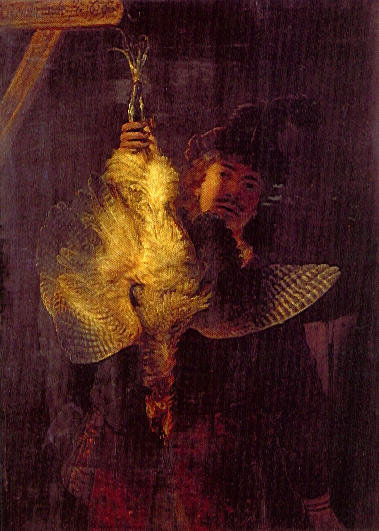
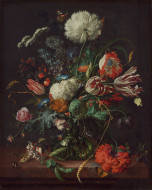
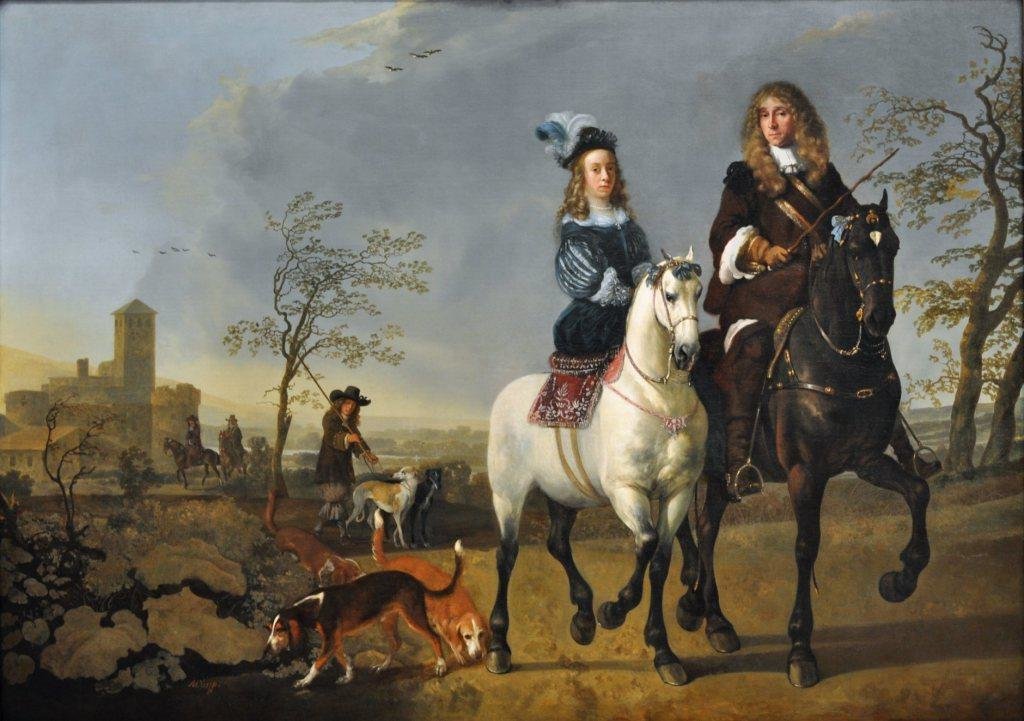
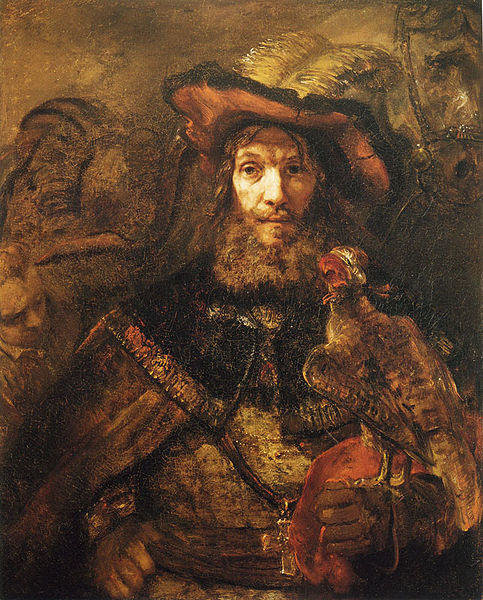
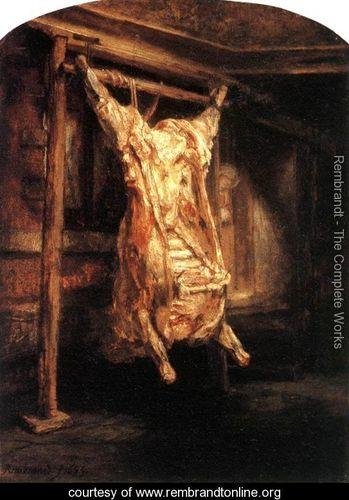
Reference List
Alpers, Svetlana. Rembrandt’s Enterprise: the Studio and the Market. Chicago: University Of Chicago Press, 1995.
Berger, Harry. Fictions of the Pose: Rembrandt Against the Italian Renaissance. California: Stanford University Press, 2000.
Bruyn, Josua. “Dutch Cheese: A Problem of Interpretation.” Simiolus: Netherlands Quarterly for the History of Art 24, no. 2, (1996): 201-208.
Chapman, Perry. Rembrandt’s Self-Portraits: A Study in Seventeenth-Century Identity. Princeton: Princeton University Press, 1990.
Garrard, Mard. “Artemisia’s Self-Portrait as the Allegory of Painting.” The Art Bulletin 62 1980: 97-112.
Held, Julius. Rembrandt Studies. Princeton, NJ: Princeton University Press, 1991.
Honig, Elizabeth. “Making Sense of Things: On the Motives of Dutch Still Life.” Res Anthropology and Aesthetics 34, (1998): 166-183.
Schama, Simon. The Embarrassment of Riches: An Interpretation of Dutch Culture in the Golden Age. New York: Vintage, 1997.
Scheller, Richard. A Survey of Medieval Model Books. Cincinnati: Haarlem, 1963.
Slive, Seymour. Dutch Painting, 1600-1800. New Haven: Yale University Press, 1998.
Sullivan, Scott. “Rembrandt’s Self-Portrait with a Dead Bittern.” Art Bulletin 62, no. 2 (1980): 236-43.
Westermann, Mariet. Rembrandt A&I (Art and Ideas). London: Phaidon Press, 2000.
Wetering, Ernst van de. Rembrandt: The Painter at Work. California: University of California Press, 2006.
Wright, Christopher. Rembrandt Self-Portraits. New York: Viking Press, 1982.